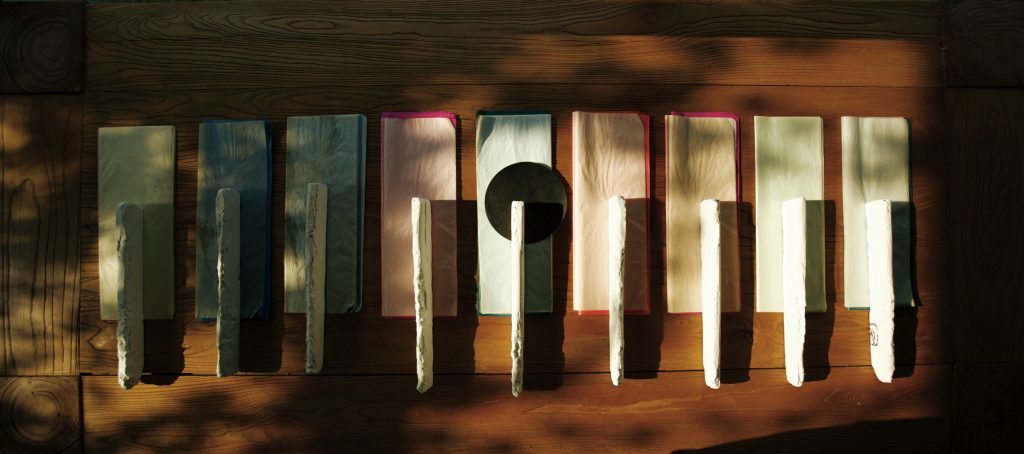12 May–28 June, 2017
By Nature
AN ZONGDE and PARK YUNGNAM two-person exhibition
Hong Kong SOHO
Overview
Hong Kong—Pearl Lam Galleries is pleased to present By Nature, a joint exhibition by Korean artists An Zongde (b. 1957) and Park Yungnam (b. 1949). Nature is considered as a motif in both An Zongde’s and Park Yungnam’s artistic creations. An allows the effects of time and nature to reveal themselves through objects, while Park paints with his fingers, wishing to create a utopia of limitless beauty. An and Park both believe that art is an experience; their art can be seen as an expression of their experience, when their art is “being made” by nature.
An Zongde reveals his philosophy of humility, prudence, and moderation through his art. He understands his materials well and is able to utilise them in various combinations with the effects of nature. The artist uses a wide variety of unpretentious materials from everyday life, including dried plants, rice, old fabric, rocks, rusted metal, needles, and thread, which change steadily with the effects of nature. An’s work is a trace of how time passes; the power of sunlight, wind, and rain consolidates on the materials, leaving unpredictable and indelible marks on his canvas.
Le Temps (2012–), one of An Zongde’s featured works, is a result of sunlight, rain, and wind acting upon the work over several years. The artist spread a blue cotton cloth on the earth and placed stones, wooden blocks, and iron on it. Artificial colours and forms disappeared after the cloth was exposed to natural elements, and the trace of time appeared on the work with new colours and forms. The white dot in the middle of the work, a minimal mark of the artist’s intervention, expresses the balance and order of a microcosm. In Le Temps (2013–), the artist placed sheets of coloured paper with sticks made of lime powder under sunlight. The sheets of paper collected light with time until all the colours disappeared and recorded the physical changes of reality which we do not see.
Park Yungnam’s creation process does not entertain any conscious intention; instead, he creates art with comfort, simplicity, and purity. Park paints with his fingers as an extension of the play that he relished when he was a child, creating freely roaming lines and powerful movements. Park’s works lead viewers to recollect forgotten delights of childhood memories, leading them to wander in the world of innocence. Among the five senses, Park is especially keen on the sense of touch, associating his finger painting to primitiveness; to Park, rubbing colours onto a canvas is akin to feeling around an immense surface of earth.
In Moonlight Song, Park’s series of black and white acrylic paintings, the artist started with nature as a motif and only hues are revealed once completed. Park is firm in his belief that “colours are forms”; without making any effort to depict nature, colours are transferred to a different kind of “natural form”. Park says, “I hope my painting is made, rather than me making the work. I wish that the created world were Utopia. Furthermore, I wish that world of Utopia were a world of limitless beauty.”






